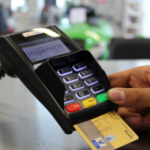Online transactions have made their way into our daily lives, allowing us to shop, send and receive money with just a tap of our fingers. One of the most popular peer-to-peer mobile payment services is Venmo. Venmo has made transferring funds between friends and family convenient and easy while providing a fast and secure platform. However, with convenience comes responsibility. Venmo requires users to verify their identity to prevent fraud and safeguard user privacy. This guide will explore Venmo identity verification, why it’s important, how to get verified, and what happens if verification fails.
Why is Venmo asking to confirm identity?
By confirming your identity, Venmo can verify who you say you are and reduces the likelihood of fraudulent activity. By doing this, they can ensure that the money you transfer goes to the right person and does not end up in the wrong hands. Additionally, this verification process helps Venmo comply with regulations from various government agencies.
Venmo requesting users to confirm their identity is not uncommon, and this popular app is known for its convenient and secure money transfer system. However, in recent years, there have been incidents of fraud, and Venmo is taking proactive measures to ensure the safety of its users.
Moreover, confirming your identity helps build trust between Venmo and its users. It assures users that Venmo is committed to providing a secure platform for them to transfer money seamlessly. It also improves the user experience by facilitating smooth transactions across the app.
Is Venmo identity verification safe?
You might wonder, “Is Venmo identity verification safe?” Rest assured that Venmo takes privacy and security measures seriously. They use encrypted data transfer and securely store your information to protect your identity from potential breaches.
The process is also designed to protect you and your hard-earned cash. This feature ensures that you are who you say you are and that no one else can access your account or make unauthorized transactions. When you sign up for Venmo, you’ll be required to avail personal information, such as your name, address, and phone number.
Venmo then verifies your identity by sending you a verification code or requesting additional documentation. This adds an extra layer of protection to your account and helps to prevent identity theft and fraud.
Why does Venmo need my SSN, address and other personal information??
Venmo uses your SSN (social security number) for a crucial reason: to confirm your identity. It’s all part of a Venmo one-time security check that helps protect you and Venmo from fraudulent activity.
But don’t worry; Not everyone has to provide their SSN to use Venmo. If you’re just using it for everyday transactions with friends and family, chances are you won’t have to provide your SSN. However, if you’re doing more significant transactions, such as transferring $300 or more in 7 days or sending $1000 or more to your bank in 7 days, Venmo will likely ask for your SSN.
Additionally, you’ll probably need to provide your SSN if you’re running a business profile on Venmo, conducting more than 200 transactions in a year, or making a group account.
So, while it may seem inconvenient to provide your SSN, just remember that it’s all for security. Venmo wants to ensure you’re you and your transactions are legitimate. Plus, it’s a small price to pay for the convenience and ease of using their platform.
How long does Venmo identity verification take?
Getting verified on the Venmo platform is a breeze and takes only a few minutes. Plus, it’s all automated, so you don’t have to worry about talking to a human and trying to prove your humanity.
That being said, sometimes, the automated process may hit a snag. It could be due to outdated or incorrect information, or maybe you recently moved and forgot to update your address. If this happens, don’t sweat it. They’ll simply ask for additional documentation to confirm your identity and guide you through the process step-by-step in the app.
How to verify your identity on Venmo
If you have not yet verified your Venmo identity, then you have limited access to how you make transactions on the app. The process of verifying your identity is straightforward, and below is how to do it:
- After you open the app, tap on the “Me” button by tapping your picture.
- Got to the Settings in the top right.
- Tap Identity Verification to start verification.
- Tab “Next” on the one-time security check page.
- Now, enter your information which will be your: Full legal name, date of birth, government-issued ID ( your passport or driver’s license), last four digits of your social security number (SSN), or select “I don’t have an SSN”, and home address.
- Tab “Next” to follow the screen prompts to continue and wait to hear from them.
What happens if Venmo identity verification fails?
If you cannot verify your identity by the deadline in the email, Venmo will suspend your ability to use the Venmo balance for making payments. You won’t be able to use the money in your Venmo account to buy things online or transfer them to other Venmo users.
But hold on a second! That doesn’t mean that your Venmo account is entirely useless. You can still receive payments from other Venmo users and transfer money from your Venmo account to your bank account. So while you won’t be able to use Venmo to pay for things directly, you’ll still have access to the money in your account.
So, what can you do to avoid this headache in the first place? Ensure you provide accurate information when you sign up for Venmo, and double-check that all the information matches what’s on your ID. And if you’re still having trouble verifying your identity, don’t hesitate to contact Venmo’s customer support team. They’re there to help you out and get you back on track.
Can I use Venmo without verifying my identity?
The short answer is no. To protect you and the app from fraud, Venmo requires users to verify their identity before sending and receiving money. This usually involves providing basic personal information, like your name, address, and date of birth. Venmo might also ask for your social security number, although this is usually only required for larger transactions or if you decide to link a bank account.
So, while you can’t use Venmo without verifying your identity, you can take comfort in knowing that the app is doing everything it can to protect you and your money. Plus, once you’re all signed up and verified, you can use Venmo to pay back your friends easily, split a cab fare, or even chip in on a group gift.
Conclusion
In a nutshell, Venmo identity verification is a crucial step for using the platform’s advanced features and maintaining secure transactions. Verifying your identity on Venmo is relatively simple and takes a few minutes. Understandably, many users are discouraged by the lengthy verification process, which delays their use of Venmo. However, staying patient and completing the process is advisable to avoid future problems. Identity verification ensures that Venmo is a safe and trusted platform for users looking to send and receive money.




